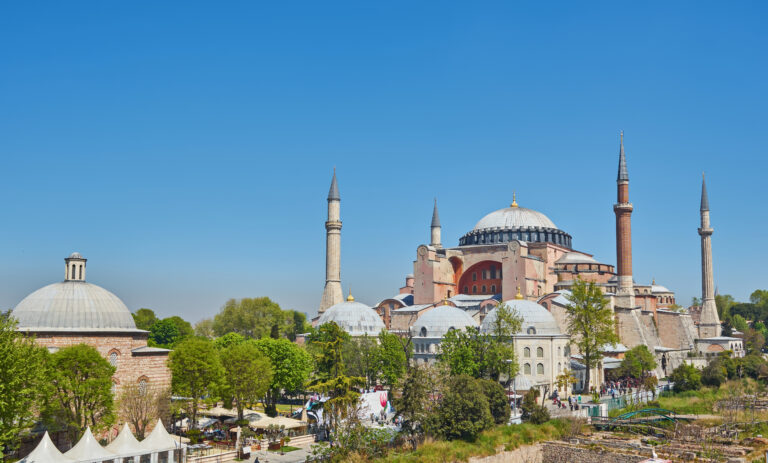Best Time to Visit Bali: A Comprehensive Guide
Planning a trip to Bali can be a daunting task, but with the right guidance, you can have a truly unforgettable experience. Bali, known for its stunning beaches, temples, and vibrant culture, is a top destination for travelers worldwide.

This comprehensive guide will walk you through the best times to visit Bali, highlighting the island’s cultural events, festivals, and activities. Whether you’re looking to relax on the beach, explore the local cuisine, or dive into the island’s rich history, we’ve got you covered.
With our expert advice, you’ll be able to plan your Bali vacation with ease, making the most of your time on this beautiful Indonesian island.
Understanding Bali’s Climate and Seasons
Understanding Bali’s climate is essential for planning a trip, as it is governed by a tropical monsoon climate. This type of climate means that Bali experiences significant seasonal variations that can impact travel plans and activities.
Tropical Climate Overview
Bali’s tropical climate is characterized by warm temperatures and high humidity levels throughout the year. The average temperature ranges from 20 to 30 degrees Celsius, making it an attractive destination for travelers seeking warm weather. The tropical climate is also marked by abundant rainfall during certain periods, contributing to the island’s lush landscapes.
Key characteristics of Bali’s tropical climate include:
- Warm temperatures year-round
- High humidity levels
- Significant rainfall during wet seasons
The Two Main Seasons: Wet and Dry
Bali’s climate is primarily divided into two main seasons: the wet season and the dry season. The wet season typically runs from October to March, with the most significant rainfall occurring between December and February. Conversely, the dry season spans from April to September, with July and August being the driest months.
| Season | Months | Characteristics |
|---|---|---|
| Wet Season | October to March | High rainfall, lush landscapes |
| Dry Season | April to September | Low rainfall, sunny days |
Best Time to Visit BALI: Month-by-Month Breakdown
To plan your trip to Bali effectively, it’s crucial to understand the monthly variations in weather and tourist seasons. Bali’s climate and tourist activities vary significantly throughout the year, making some months more suitable for your plans than others.
January to March: Rainy Season Insights
January to March is considered the wettest period in Bali, with frequent rain showers and high humidity. While this might deter some travelers, it’s a great time for those looking for lower prices and fewer crowds. It’s ideal for experiencing Bali’s culture without the peak season chaos. Some attractions and temples might be less crowded, offering a more serene experience.
April to June: Transition and Early Dry Season
As the rainy season subsides, April to June brings a pleasant transition into the dry season. The weather becomes drier and sunnier, making it an excellent time for outdoor activities like hiking and surfing. The landscapes are still lush from the rains, adding to the island’s beauty. This period is great for travelers who want to enjoy Bali’s natural beauty without the intense heat of the peak dry season.
July to September: Peak Dry Season
The peak dry season, from July to September, is the most popular time to visit Bali. The weather is dry and sunny, perfect for beach activities and outdoor explorations. This is the best time for surfing, diving, and other water sports. However, it’s also the busiest and most expensive time, with higher prices for accommodations and tourist services.
October to December: Transition to Wet Season
October to December marks the transition back to the wet season. While there’s a chance of rain, the showers are often short, and the island remains lush. It’s a good time for those who want to avoid the crowds and high prices of the peak season. It’s also a great period for cultural experiences, with fewer tourists at the temples and festivals.
Understanding these monthly variations can help you plan your trip to Bali according to your preferences, whether you’re looking for cultural experiences, outdoor adventures, or simply a relaxing getaway.
High Season in Bali: Pros and Cons
Understanding the pros and cons of visiting Bali during peak season can help you plan your trip effectively. The high season, which typically runs from July to September, is characterized by dry weather and a vibrant atmosphere.
Peak Tourist Months
The peak tourist months in Bali are July, August, and September. These months attract the largest number of visitors due to the favorable weather conditions and school holidays in many countries.
Benefits of Visiting During Peak Times
Visiting Bali during peak season has several benefits. The dry weather makes it ideal for outdoor activities such as surfing, diving, and hiking. Additionally, the island’s events calendar is packed with cultural festivals and concerts, offering a rich cultural experience. The peak season also ensures that most tourist facilities are fully operational, providing a wide range of accommodation and dining options.
Drawbacks of High Season Travel
However, there are also some drawbacks to consider. The high season means larger crowds and longer queues at popular attractions. Accommodation prices tend to be higher, and it’s not uncommon for prices to surge during this period. Additionally, the island’s roads can become congested, making transportation more challenging.
Despite these challenges, many travelers find that the benefits of visiting Bali during peak season outweigh the drawbacks. With proper planning, you can enjoy the best that Bali has to offer while minimizing the impact of the crowds.
Low Season in Bali: Hidden Advantages
The rainy season in Bali is often viewed as a time to avoid, but it actually presents several opportunities for a more authentic and relaxed experience. While the wet weather might deter some travelers, it brings with it a host of benefits that can enhance your trip.

Benefits of Visiting During Rainy Season
Visiting Bali during the low season has its perks. Fewer tourists mean that popular attractions are less crowded, allowing for a more peaceful and intimate experience. Additionally, many hotels and resorts offer discounts and special promotions to attract visitors during this period, making it a more budget-friendly time to visit.
What to Expect: Rain Patterns and Weather
Bali’s rainy season typically runs from October to March, with the most significant rainfall occurring in January and February. However, the rain showers are often short and followed by sunshine. Understanding these rain patterns can help you plan your activities and make the most of your trip.
Indoor and Rainy Day Activities
Bali offers a variety of activities that are perfect for rainy days. You can explore the island’s museums and art galleries, indulge in a rejuvenating spa day, or enjoy cooking classes where you can learn to prepare traditional Balinese dishes. These activities not only provide a respite from the rain but also offer a deeper insight into Bali’s culture and cuisine.
Bali’s Cultural Calendar: Festivals and Events
Bali is known for its rich cultural heritage, which is beautifully showcased through its various festivals and events throughout the year. The island’s cultural calendar is filled with vibrant celebrations that reflect its deep-rooted traditions and customs.
Nyepi: Balinese New Year Experience
Nyepi, or the Balinese New Year, is a unique and significant event where the island observes a day of silence. This hindu celebration involves fasting, meditation, and self-reflection, offering visitors a chance to experience the local culture in a profound way.
Galungan and Kuningan Celebrations
Galungan is a significant Balinese festival that honors the creator of the universe and the spirits that inhabit the island. The celebration is marked by the construction of penjor (decorated bamboo poles) and the exchange of offerings. Kuningan marks the end of the Galungan cycle, celebrating the return of the spirits to their heavenly abodes.
Temple Ceremonies and Seasonal Rituals
Bali’s temples are the heart of its spiritual life, hosting various ceremonies and rituals throughout the year. These events are characterized by traditional dances, gamelan music, and elaborate offerings, providing a glimpse into the island’s rich spiritual heritage.
Modern Festivals and Events
In addition to traditional festivals, Bali also hosts modern events that cater to a global audience. These include cultural festivals, food festivals, and art exhibitions, which add a contemporary flavor to the island’s cultural landscape.
Best Times for Different Activities in Bali
Whether you’re looking to surf, dive, hike, or simply enjoy the beach, Bali’s climate and seasonal changes play a significant role in planning your trip. Understanding the best times for various activities can help you make the most of your visit.
Surfing: Seasonal Swells and Breaks
Bali is renowned for its surfing, with consistent swells throughout the year. The dry season, from May to September, is considered the best time for surfing, with consistent waves and favorable winds.
Best Surf Spots by Season
- Uluwati and Nusa Dua: Best during the dry season for big waves.
- Kuta and Seminyak: Suitable for all-year-round surfing, with smaller waves during the wet season.
Surf Conditions Calendar
| Month | Surf Conditions |
|---|---|
| May | Excellent swells |
| September | Optimal wave conditions |
Diving and Snorkeling: Visibility Factors
Diving and snorkeling in Bali are best during the dry season when the waters are calm and visibility is high, typically from April to October.
Marine Life Seasonal Patterns
The wet season can bring nutrient-rich waters, attracting a variety of marine life, making it a great time for spotting manta rays and dolphins.
Top Diving Locations by Month
- Amed: Best in May for coral spawning.
- Menjangan Island: Excellent diving conditions year-round.
Hiking and Outdoor Adventures
The dry season is ideal for hiking and outdoor adventures, with clear trails and comfortable temperatures. Popular hikes include Mount Batur and Mount Agung, best tackled during the cooler dry months.
Beach Time and Swimming Conditions
Bali’s beaches are enjoyable year-round, but the dry season offers the best swimming conditions, with calm seas and clear waters. Seminyak and Nusa Dua are popular spots during this time.
Regional Weather Variations in Bali
Bali’s diverse geography leads to distinct weather conditions in different parts of the island. While the island is generally known for its tropical climate, the weather can vary significantly from one region to another.
South Bali: Kuta, Seminyak, Uluwatu
South Bali, which includes popular areas like Kuta, Seminyak, and Uluwatu, tends to be drier during the dry season and wetter during the wet season. The south is generally sunnier, making it a favorite among tourists. However, it can get crowded during peak season.
Central Bali: Ubud, Tegallalang
Central Bali, encompassing areas like Ubud and Tegallalang, experiences a slightly different climate due to its inland location. It tends to be cooler than the coastal areas and can be misty during the early morning hours, especially during the wet season.
North and East Bali: Amed, Lovina
The north and east regions, including Amed and Lovina, have a drier climate compared to the south during the wet season. These areas are great for activities like diving and snorkeling due to their clearer waters during certain times of the year.
West Bali: Menjangan, Pemuteran
West Bali, known for areas like Menjangan and Pemuteran, is generally dry and sunny, making it ideal for marine activities. The weather here is relatively stable, with less rainfall compared to other parts of the island during the wet season.
Understanding these regional variations can help you plan your trip to Bali more effectively, ensuring that you make the most out of your visit regardless of the time of year you travel.
Budget Considerations: How Seasons Affect Prices
The cost of a Bali vacation varies greatly depending on the time of year you choose to visit. Understanding the seasonal fluctuations in prices can help you plan a more budget-friendly trip.
Accommodation Price Fluctuations
Accommodation prices in Bali surge during the peak dry season from July to September. Luxury resorts and hotels in popular areas like Kuta and Seminyak tend to increase their rates significantly. In contrast, during the wet season, prices drop, offering more affordable options for travelers on a budget.

Flight Price Trends from the US
Flight prices from the US to Bali also vary by season. The high season (July to September) sees higher demand, leading to increased fares. Conversely, flying during the shoulder or low season can result in more affordable flights. Booking in advance is always recommended to secure the best deals.
Activity and Tour Pricing Seasonality
Prices for activities and tours in Bali, such as water sports and cultural tours, tend to be higher during peak season due to increased demand. However, some tour operators offer discounts during the off-season to attract visitors. It’s essential to research and compare prices to find the best value for your money.
Avoiding the Crowds: Timing Your Visit
For a more peaceful Bali experience, consider the timing of your visit carefully. Bali is a popular destination, attracting visitors from around the world with its beautiful landscapes, rich culture, and vibrant atmosphere. However, the island can get crowded, especially during peak season. By understanding when the busiest periods are and planning accordingly, you can enjoy a more serene experience.
Busiest Periods to Avoid
The busiest times in Bali are typically during the dry season, from July to September, and during major holidays. Avoid visiting popular spots like Uluwatu Temple and Kuta Beach during these times if you prefer fewer crowds. Additionally, be aware that Nyepi, the Balinese New Year, can attract large crowds in the days leading up to the event.
Sweet Spots for Balanced Experience
For a balanced experience with manageable crowds, consider visiting during the shoulder season, which includes April to June and October to November. These periods offer pleasant weather and fewer tourists, making it ideal for exploring Bali’s attractions without the overwhelm.
Off-the-Beaten-Path Alternatives
Exploring less crowded areas can also enhance your Bali experience. Consider visiting Amed, Lovina, or Menjangan for a more secluded and peaceful atmosphere. These areas offer beautiful landscapes and cultural experiences without the large crowds found in more popular destinations.
Practical Tips for Any Season in Bali
Bali’s tropical climate and vibrant culture make it a popular destination, but knowing how to pack, stay safe, and navigate is key to a successful trip.
Packing Essentials Year-Round
When traveling to Bali, it’s crucial to pack light, breathable clothing, sunscreen, and a hat to protect against the sun. Don’t forget to include insect repellent to safeguard against mosquitoes and other insects. Comfortable walking shoes are a must, as is a light rain jacket or poncho, especially during the wet season.
Health and Safety Considerations
Staying healthy in Bali involves being mindful of food and water hygiene. Stick to bottled or filtered water and choose restaurants that are popular with locals and tourists alike. Be cautious with street food, and ensure that any fruits or vegetables are properly washed or peeled.
Transportation Tips by Season
Transportation in Bali can vary depending on the season. During the dry season, renting a scooter is a popular option, offering flexibility and freedom. However, during the wet season, it’s advisable to opt for more robust vehicles or taxis, as roads can become slippery.
Booking Recommendations and Timing
Booking accommodations and tours in advance is highly recommended, especially during peak season. This not only ensures availability but can also help in securing better rates. Consider booking through reputable platforms and always read reviews before making a decision.
| Aspect | Dry Season | Wet Season |
|---|---|---|
| Transportation | Scooter rental is popular | Prefer robust vehicles or taxis |
| Accommodation | Book in advance for best rates | Look for discounts and packages |
| Activities | Outdoor activities are ideal | Indoor activities or spa days |
Conclusion: Planning Your Perfect Bali Trip
With its rich culture, stunning landscapes, and diverse activities, Bali is a top destination for travelers worldwide. Effective planning a trip to Bali involves understanding the island’s climate, cultural calendar, and regional variations to make the most of your visit.
By considering the best times to visit, whether during the dry season for outdoor adventures or the wet season for a more relaxed atmosphere, you can tailor your Bali vacation planning to suit your preferences. From surfing and diving to exploring temples and enjoying local festivals, Bali offers something for every interest.
To ensure a smooth and enjoyable trip, remember to pack accordingly, stay informed about local events, and plan your activities according to the season. With these insights, you’re well-equipped to create unforgettable memories in this beautiful Indonesian island.





